HuanGao Universal Dual Channel AC Charger HG-1206W

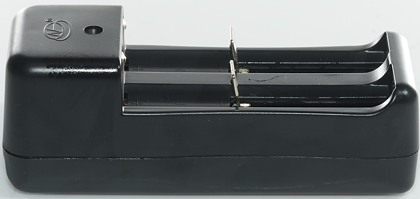
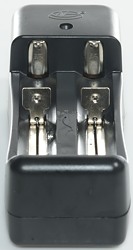
This is a cheap charger from Fasttech (sku:1192300), it is supposed to charger both LiIon and NiMH batteries, but when I put a NiMH in the charger the led flashed red.
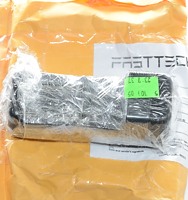
I got the charger in an envelope, there was no instruction sheet or any accessories with it.
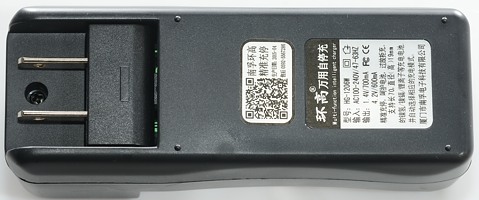
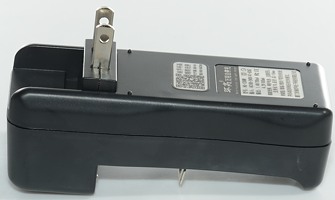
The charger is with a foldable US plug.

But also support 230VAC.
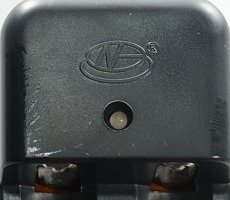
There is a single red/green led on the charger. The led is red while charging and green at any other times.


The charger uses sliders in metal rails and they work fairly well. It can handle batteries from 30mm to 69mm in length.







The charger can handle 69 mm long batteries including flat top cells.
Measurements charger
- Supposed to do NiMH, but reports error when trying.
- Idle power consumption is 0.22 watt at 230VAC
- Charger will start charging from 0.5 volt.
- Will discharge with 0.4mA when not powered.
- Will discharge with 0.4mA when battery is full.
- Will stop charging at 4.28 volt.
- Will restart charging at 4.24 volt.
- The two batteries are nearly in parallel (There is a small resistance between them).
%20%231.png)
The charger uses a CC charging (Constant current), there is no CV (Constant voltage) phase. This means there will be a significant voltage drop when the charger terminates, as can be seen here the voltage drop is enough to restart charging.
To get a full charge on the battery the charger uses a rather high termination voltage.
The charging speed is a bit slow.
%20%232.png)
Second channel is the same.
%20%231.png)
Using a cell with less capacity will make the charge faster.
%20%231.png)
And a larger cell means longer charge time.
%20%231.png)
Using an older cell means termination problems due to higher internal resistance. The charger is jumping in and out of charge mode at a fast pace.
%20%231.png)
This cell has the same problem, but at a slower rate.
%20%231.png)
And here the charger terminated fine, but will probably restart again soon.
.png)
Charging two cells will halve the charge current, this means it need more than 15 hours to charge two 3100mAh cells.
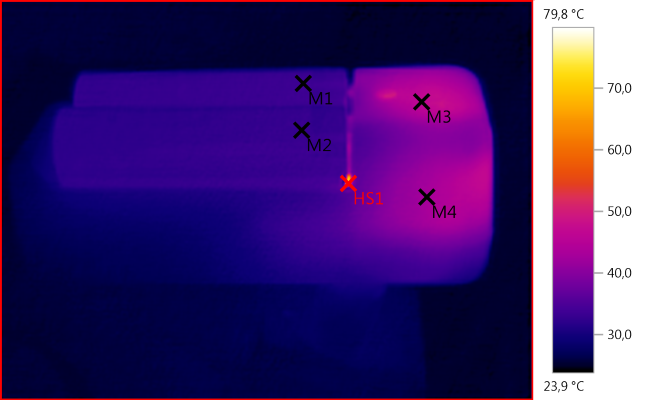
M1: 33,5°C, M2: 33,0°C, M3: 46,6°C, M4: 42,8°C, HS1: 79,8°C
Somewhere in the charger there is a hot electronic part, but the cells stay cool.
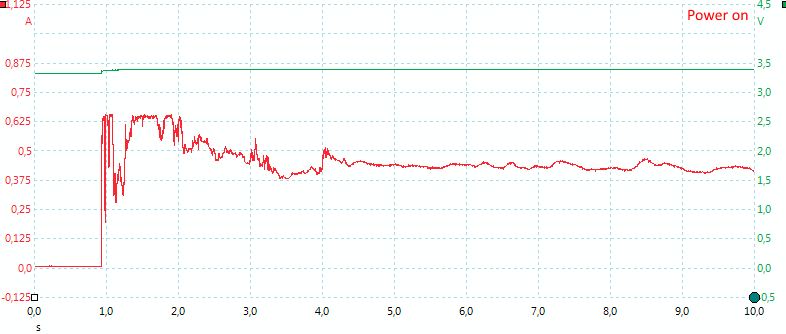
The charger starts immediately, but it takes a few second to stabilize the current.
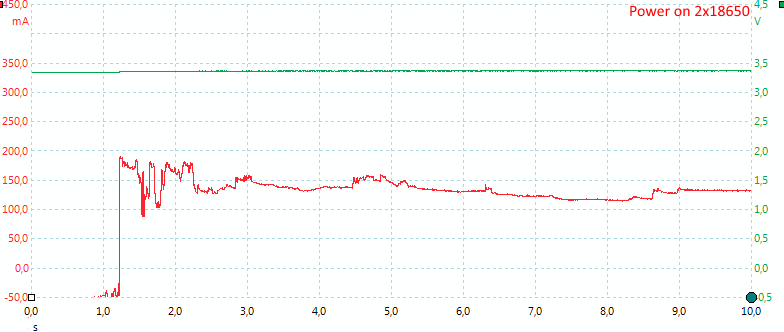
It is the same with two cell, except the current is lower (I have changed the current scale).

This curve shows the charge current, depending on battery voltage, I started at a low voltage and slowly increased the voltage.
There is not any termination in the 1.5 to 2.0 volt range, where I would have expected a NiMH voltage termination.
It looks like the charger will charge NiMH, but without any termination.
The charger passed an isolation test with 2500 volt, but failed a 5000 volt test, this makes the charger acceptable for 120VAC usage, but doubtful for 230VAC usage.
Conclusion
The charger works and can be use with 120VAC for LiIon, but I do not like the over voltage or the missing CV phase. There is also the doubtful NiMH charging, due to the led flashing red every time I tried, I did not do any test curves.
Basically you get what you pay for: A cheap, not very good charger, but it can be used for LiIon in an emergency.
Notes
Here is an explanation on how I did the above charge curves: How do I test a charger